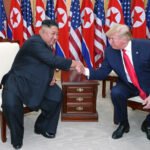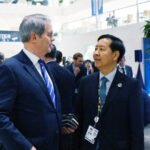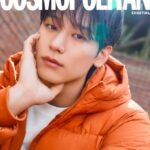Seoul Mayor Oh Se-hoon gives a celebratory speech at the groundbreaking ceremony for the Namsan gondola facility construction
The Seoul Metropolitan Government on Thursday held a groundbreaking ceremony for gondola lift facilities that will shuttle passengers from the base of Mt. Namsan to its top in five minutes, starting as early as 2026.
The gondola will consist of 25 cabins each with 10 seats. They can carry up to 1,600 passengers in a 832-meter-long ride every hour.
The groundbreaking ceremony was held in Namsan Yejang Park, where the aerial lifts’ lower platform will be located and about 200 meters from its nearest subway station Myeongdong Station.
“To climb to the top of Namsan, we have to walk, take a cable car, or take a local bus. A gondola will improve accessibility to Namsan,” Oh Seung-min, an urban redevelopment manager at the Seoul Metropolitan Government, said at the ceremony.
Currently, Namsan cable car shuttles between the platform near Myeongdong Station to the top of Namsan. It has been in service by a private company since 1962.
But its outdated facilities and long wait time caused delays for arrival to and departure from the mountain. The ban of tourists buses to the peak from 2021 added to the incovenience, particularly for people with disabilities and carrying strollers.
A bird’s eye rendering of the proposed Namsan gongola life facility (Courtesy of Seoul Metropolitan Government)
All profits earned from the gondola operations will be put into ecological environment conservation projects and cultural and leisure activities for Seoul citizens.
The city of Seoul said it will minimize environmental damage to be caused by the gondola construction. To do so, it has launched a committee overseeing the conservation and management of Namsan Park, as well as development in surrounding areas.
In December last year, the Seoul Metropolitan Government officially invited bidders to win rights to build the gondola lifts. It did not disclose the winner of the project.
By Hae-Ryon Choi
haeryon@hankyung.com
Yeonhee Kim edited this article















